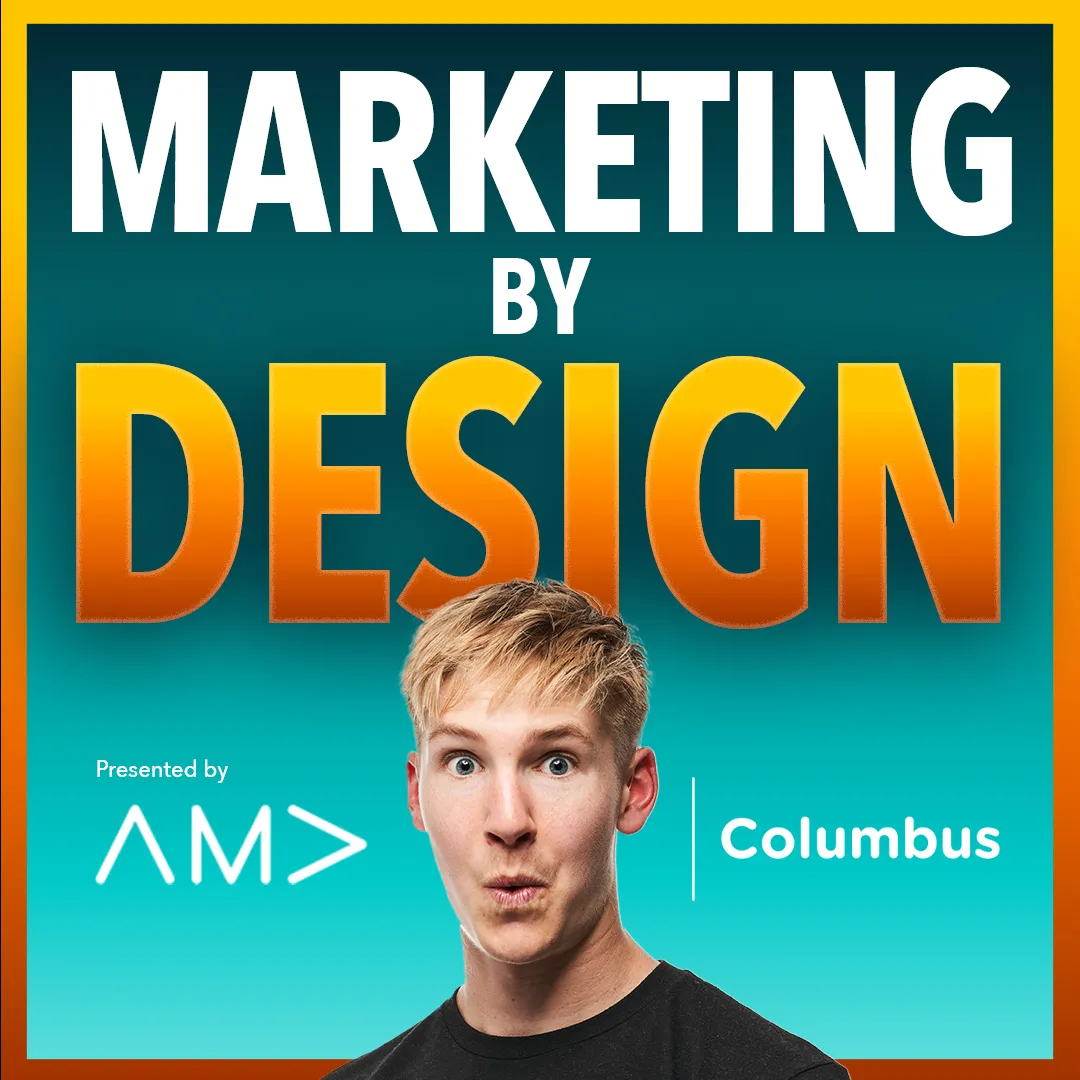The AI-Enhanced Web Design Workflow: 4 Steps to Faster Builds, Better UX, and Lower Costs

In the last 2–3 years, building a high-performing website has changed night and day. AI now accelerates every stage—strategy, wireframes, design/content, and build/launch—so you can cut cycle time, tighten alignment, and ship a better site for less. Here’s my current playbook as a solo studio owner in Columbus, Ohio.
Episode Overview
We’ll walk through the traditional 4-step agency workflow—and how I’ve upgraded each step with AI to improve time-to-value, reduce rework, and keep the site evolving post-launch.
- Strategy, Discovery & Research
- Structure & Wireframes
- Design & Content
- Build, Launch & Grow
Key Takeaways
- Capture once, reuse everywhere. Record calls → summarize → build a persistent knowledge base you reference at every step.
- Prototype sooner. AI-generated sitemaps, flows, and low-fi wireframes help you test and align fast.
- Un-silo creative. AI drafts brand-aligned copy and visuals so design + content iterate together.
- Ship + learn. Pair no-code builders with analytics and AI-assisted analysis to continuously optimize.
Timestamps
- 00:00 – Why the old agency process broke (and what changed)
- 02:21 – The 4-step framework we’ll upgrade with AI
- 03:00 – Step 1: Strategy & discovery with transcripts + knowledge hubs
- 06:11 – Step 2: Sitemaps, flows, and wireframes with Reloom + UX Pilot
- 09:29 – Step 3: Design & content—style guides, drafts, and rapid iteration
- 14:56 – Step 4: Build, launch, and grow with Webflow/Framer + analytics
- 16:34 – Using AI to read Clarity/Hotjar data and recommend changes
- 16:44 – Wrap + where to connect for process updates
Step 1 — Strategy, Discovery & AI Research
Goals: Align on goals, audience, positioning; centralize knowledge to avoid re-interviewing clients.
How I run it now
- Call capture & transcripts: TLDV to record and transcribe kickoff and stakeholder calls.
- Knowledge base: Load transcripts + source docs into NotebookLM and a ChatGPT Project to create a searchable hub of: industry research, buyer language, offers, objections, and decisions.
- Smart intake forms: Use Moxi (or your form tool) + GPT to generate tailored post-call intakes based on what the client already said—no generic questionnaires.
- Reference forever: Keep the project’s goals and constraints pinned; ask GPT to check new ideas against this canon (“Are we still aligned with X, Y, Z?”).
Outcome: Less back-and-forth, fewer billable “clarification” hours, tighter north star.
Step 2 — Structure & Wireframes (AI First Drafts)
Old way: Multiple static wireframes, slow approvals, lots of manual IA/UX lift.
AI-enhanced flow
- Sitemap generation: Feed your call summary to Reloom (with a prepared prompt) → get proposed site architecture + sample copy.
- Flow coverage: Use UX Pilot to sketch key flows (login, checkout, onboarding, etc.) and produce low-fi screens for discussion.
- Auto-feedback loop: Paste your sitemap/flows back into the ChatGPT Project; ask it to check against goals, audience, and constraints from Step 1.
- Client alignment: Bring a ready draft to the next meeting so the conversation starts at iteration, not inception.
Outcome: You get to “zero → one” fast, so feedback is concrete and momentum stays high.
Step 3 — Design & Content (One Table, Fewer Silos)
Old way: Separate teams for copy/design, handoffs, meetings = bloat and drift.
AI-enhanced flow
- Brand style inside GPT: Load the brand book (colors, typography, tone, examples) into your ChatGPT Project; generate on-brand copy and mockup prompts aligned to that style.
- Draft copy first: Use GPT/Claude to produce first-draft sections (hero, proof, offer, FAQs). Iterate in Figma with designers rather than throwing docs over the wall.
- Visual exploration:
- Light image exploration via GPT’s image features for moodboards.
- Pull UI patterns/templates from Toolfolio (and your own Figma libraries).
- Light image exploration via GPT’s image features for moodboards.
- Prompt → prototype: Experiment with MagicPath to turn wireframes + brand prompts into a clickable, coded rough draft (for exploration only; final build lives elsewhere).
- Feedback to actions: Export Figma comments → summarize in GPT → produce action items and accept/reject recommendations.
Outcome: Faster concepting, cohesive copy+design, fewer cycles.
Step 4 — Build, Launch & Grow (Ship + Learn)
Platform choices
- Webflow (my primary): robust, scalable, marketing-friendly; clean CMS; custom code when needed.
- Framer: very fast for marketing sites; “Figma-like” build experience.
- Figma Sites: still early; code quality can be “soup”—not my recommendation for scalable marketing sites.
Measure → improve
- Microsoft Clarity / Hotjar: Heatmaps, scroll depth, rage clicks, session replays.
- AI analysis: Export key metrics and ask GPT: “Given our goals, what’s blocking conversion? Recommend prioritized tests based on best practices.”
- Iterate quickly: Because you’re in Webflow/Framer, shipping copy/layout/UX tweaks is fast—no dev bottleneck.
Outcome: You don’t “handoff and hope.” You launch, learn, and compound results.
My Current Tool Stack (Mentioned)
- Capture/KB: TLDV, NotebookLM, ChatGPT Projects
- Structure: Reloom, UX Pilot
- Design/Content: Figma (+ libraries), Toolfolio, ChatGPT (brand style guides, copy), MagicPath (proto-code)
- Build: Webflow (primary), Framer (secondary)
Analytics & CRO: Microsoft Clarity, Hotjar → GPT analysis



.webp)

.webp)
.avif)
.webp)

